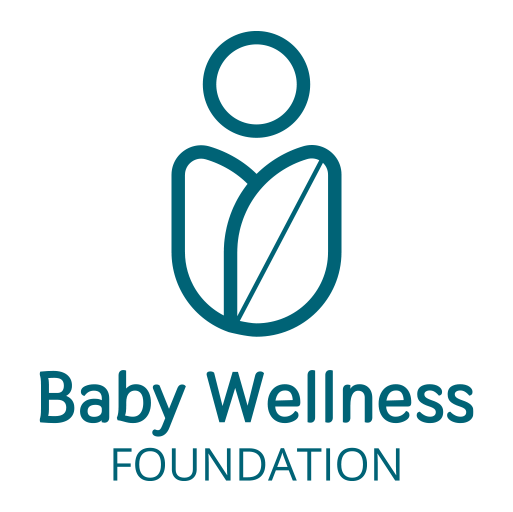Articoli tecnici per professionisti
Esegui il login oppure registrati!
Ahldén et al., Parent’s expectations about participating in antenatal
parenthood education classes. Journal of Perinatal Education, 2012
21(1):11-7
Arabin B et al., Need for interventional studies on the impact of music in
the perinatal period: results of a pilot study on women’s preferences and
review of the literature. Journal of Maternal Fetal Neonatal Medicine,
2012
Arya et al., Maternal music exposure during pregnancy influences
neonatal behaviour: an open-label randomized controlled trial.
International Journal Paediatrics, 2012
Bellieni C. et al. Is prenatal bonding enhanced by prenatal education
course?. Minerva Ginecologica, 2007; 59: 125-129
Bienfait M. Maury M, Haquet A, Faillie JL,Franc N, Combes C, Daudé H,
Picaud JC, Rideau A, Cambonie G. (2011) Pertinence of the self-report
mother-to-infant bonding scale in the neonatal unit of a maternity ward.
Early Human Development 87(4):281-7
Blumfeld H. et al., Does a mother singing to her premature baby affect
feeding in the neonatal intensive care unit? Clinical Pediatrics, 2006; 45,
65-70
Bowlby J., Una base sicura. Raffaello Cortina Ed., Milano,1969
Bowlby J. (1989) Una base sicura – Applicazioni cliniche per la teoria
dell’attaccamento. Milano: Raffaello Cortina.
Caine, J. (1991). The effects of music on the selected stress behaviors,
weight, caloric and formula intake, and length of hospital stay of premature
and low birth weight neonates in a newborn intensive care unit. Journal of
Music Therapy, 28, 180-192
Calvino I., Un re in ascolto, Mondadori, Milano 2001
Carolan et al., The Limerick Lullaby project: an intervention to relieve
prenatal stress. Midwifery, 2011
Cassidy, J.W., & Standley, J.M. (1995). The effect of music listening on
physiological responses of premature infants in the NICU. The Journal of
Music Therapy, 32(4), 208-227
Cevasco A., The effects of Mothers’ Singing on full term and preterm
infants and maternal emotional responses. Journal of Music Therapy.
2008; 45(3): 273
therapy on oxygen saturation in premature infants receiving endotracheal
suctioning. The Journal of Nursing Research, 11, 209-216.
Codice deontologico dell’ostetrica/o, 19 giugno 2010
Coleman, J.M., Pratt, R.R., Stoddard, R.A., Gerstmann, D.R., Abel, H.
(1997). The effects of the male and female singing and speaking voices on
selected physiological and behavioral measures of premature infants in
the intensive care unit. International Journal of Arts Medicine, 5(2), 4-11
Dabrassi F. et al., Relazione gestante-feto, modalità del parto e sviluppo
fisico del bambino. Dottorato di ricerca in psicologia generale e clinica,
Bologna, 2008
Deave et al., Transition to parenthood: the needs of parents in pregnancy
and early parenthood. BMC Pregnancy Childbirth, 2008; 29 (8):30.
Farhat A. et al, The effect of listening to lullaby music on physiologic
response and weight gain of premature infants. Journal of Neonatal-
Perinatal Medicine, 2010; 3: 103-107
Figueiredo B. et al. Mother-to-infant and father-to-infant initial emotional
involvement. Early Child Development and Care, 2007; 177(5): 521-532
Fiscon D., La parola, il silenzio, il canto in un progetto di preparazione alla
nascita, Stampa a cura dell’autrice, Padova, 1999
Flacking R. Lehtonen L., Thomson G., Axelin A, Ahlqvist S, Hall Moran V,
Ewald U, Dykes F (2012) Closeness and separation in neonatal intensive
care. Acta Paediatrica 101: 1032 – 1037
Forcada-Guex M., Muller-Nix C., Pierrehumbert B., Borghini A.,
Moessinger A., (2006) Early Dyadic Patterns of Mother-Infant Interactions
and Outcomes of Prematurity at 18 Months Pediatrics 118: e107- e114
Fornari F. Psicoanalisi della musica. Milano:Longanesi, 1984
Fowlie & McHaffie (2004), Supporting parents in the neonatal unit. BMJ;
329:1336
Germani R., Mendicini M., Il neonato Pretermine In Mendicini M.
Neonatologia (2009) II edizione. Roma: Verduci Editore.
Goulet C., Bell L, St-Cyr D, Paul D, Lang A (1998) A concept analysis of
parent-infant attachment. J Adv Nurs 28: 1071–81.
Krueger C. (2010), Exposure to Maternal Voice in preterm infants: a
Review. Adv Neonatal Care; 10(1):13-20
Laurel et al. (2002) Lullabies and playsongs : why we sing to children.
Zero to three 12(2):31-34
Manfredi P. – Imbasciati A. Il feto ci ascolta ed impara. Roma: Edizioni
Borla; 2004
Manfredi P. et al. (1997) L’esposizione auditiva fetale: uno strumento per
l’indagine sulle origini dello sviluppo psichico. Imago,1997; 2: 89-106
Marazziti D. et al. Aspetti neurobiologici dell’attaccamento. Giornale
Italiano di Psicopatologia, 2008; 14:58-71
Nardi M.T. La relazione Sonora. Casa Editrice La Scuola, Brescia, 2009
Nolan M., Before we begin. The importance of antenatal education. The
Practising Midwife, 2012;15(4):12-4.
Odent M., La scientificazione dell’amore, L’importanza dell’amore per la
sopravvivenza umana. Urrà Edizioni, 2008
Ottaviano S., Ottaviano C. Il neonato e la famiglia In Mendicini M.
Neonatologia (2009) II edizione. Roma: Verduci Editore.
Querleu D. et al. Hearing by the human fetus?. Seminars in Perinatology,
1989; 73 (5): 409-420
Rapley G., Keeping mothers and babies together–breastfeeding and
bonding. RCM Midwives, 2002; 5(10):332-4.
